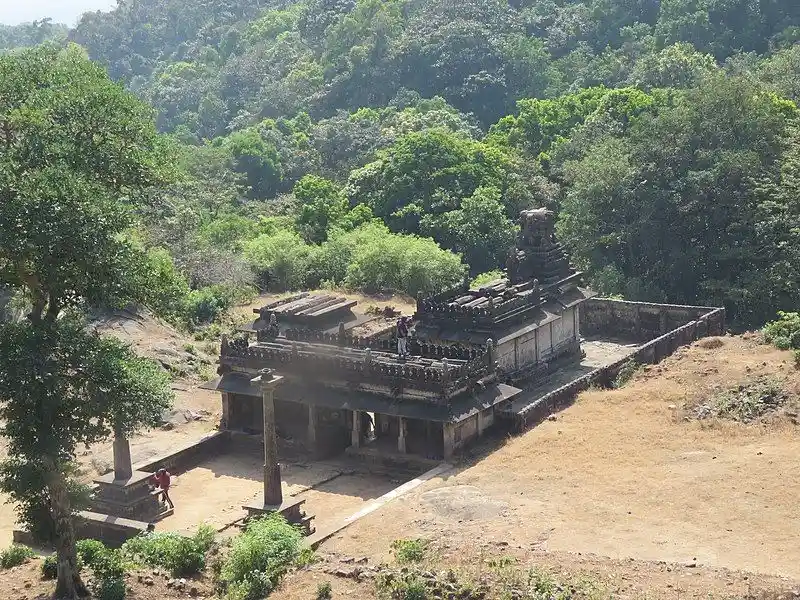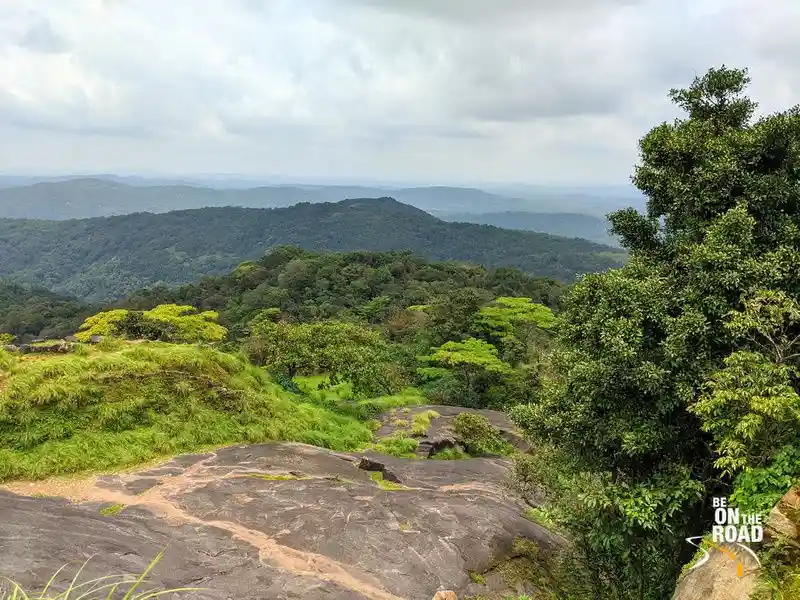A Fort That Humbled The Mighty Mughals - II
Situated in the Shivamogga district of Karnataka, approximately 18 kilometres from Thirthahalli, stands the 9th-century fortress known as Kaveladurga. This concealed hill fort carries a profound historical heritage, as revealed in the latter part of this narrative. The former bastion of the Keladi Nayakas witnessed a succession of rulers during its existence. Today, scant traces endure what was once a grand and distinctive architectural marvel. The vestiges of structures within its compound evoke the echoes of a bygone era.

Kaveladurga Durga Fort. Source: Wikimedia Commons
Perched atop a hill in the Western Ghats at an elevation of 1541 meters, the ninth-century stronghold of Keladi Nayakas, the Kevaldurga Fort holds a central position in a rich political and architectural legacy, making it one of India's exceptional architectural wonders. As discussed in the previous section, the fort comprises seven layers of defence, each with its gate.
Once the fourth gate is crossed, visitors encounter the remains of several ancient temples, including the Shikareshwara Temple, the modest shrine of Lakshminarayana Temple perched on a weathered rock, and the Kashi Vishwanath Temple. The Kashi Vishwanath Temple stands out with its intricate carvings of armed warriors, the sun, the moon, birds, elephants, and snakes on the external wall. The Shikhareshvara or Srikanthesvara temple is positioned near the centre of the hill, facing the western sea. It comprises a garbhagriha, an entry porch, and a Nandi mandapa. The ruins of Kashi Vishwanath Temple feature an Islamic-style doorway. Two imposing pillars standing resolute at the entrance courtyard showcase the remarkable temple architecture developed during the Keladi monarchs' rule. The sculptures and carvings on the temple's exterior wall exude simplicity and grace in their execution and adornment.
Behind these temples, the ruins of a substantial palace can be found, with only the plinth and several stone columns remaining. Among the remains are a firewood stove and a lavatory, both crafted from stone, as well as a trough hewn from a single piece of stone. The palace site also features an elaborate basement that is part of a vast terraced structure. Recent clearing in the area unveiled a sequence of interconnected chambers encircling a large central quadrangle. This space includes a spacious pillared verandah, a pooja room, a kitchen with five stone ovens, a stone platform in the bathroom with a well-developed water supply system, and a large covered verandah leading to a T-shaped tiered tank.
From the palace site, a stone stairway ascends to a small entrance within the inner fortifications, leading to the wall at the fort's western boundary. The view from this point is breathtaking, capturing tiers of densely wooded hills rolling into the horizon and the sparkling waters of Varahi Dam to the southwest.
At the Kavaledurga Fort, the once-mighty walls now yield to relentless grass, while kunds (tanks) that were once a perpetual water supply are now abandoned amidst overgrown vegetation.
Kavaledurga stands as a marvel of engineering and site planning, with its multiple levels adeptly following the hill's contours and fortifications seamlessly blending into the landscape, utilising large boulders and outcrops, concealed by the lush vegetation brought by the monsoon. During the monsoon, the fort's allure reaches its peak as every surface is blanketed in lush greenery, and tendrils of mist drift over certain sections of the structure. The fort bears witness to the history of a modest yet proud kingdom that once graced this beautiful land.
Although largely in ruins now, Kavaledurga preserves two forts and the Mylaareshwara temple. Of the fifteen temples that once graced the fort, only the three mentioned earlier remain standing. The remnants of the grand royal palace, including the Darbar hall, prison, ammunition house, swimming pools, Ghalige Battalu (an ancient copper time-measuring vessel), and the royal stable for horses and elephants, offer glimpses into the past. The temples and palace exhibit astonishing intricate artwork, including finely sculpted stone idols. A striking and commendable instance of this craftsmanship lies in the stone idols. As previously mentioned, the stepwell, featuring an unusual T-shape, stands behind the palace, serving as evidence of past water management and archiving practices.
Rain harvesting technology was employed, with collected water flowing from the fort's top to the bottom through a specially designed conduit. Even today, water travels from one lake to another through a subterranean channel, accumulating in the large lake beneath the fort hill and returning through a village canal to join Thimmarasa Nayaka na Kere, another significant artificial lake. In its prime, the fort boasted seven water bodies, ensuring access to water throughout the year.
Currently, a small cave-like structure nearby provides year-round access to fresh water. This is known as "Gadaa Theertha," attributed to being excavated by Bheema's Gadaa from the Mahabharata. According to mythology, the Pandavas, as well as the sages Agastya and Valmiki, sought refuge in this fort at various points.
On the path to the fort, a statue of "Aadhishesha," the sacred snake, greets visitors. Another location known as "Tupaaki Buruju" likely served as an area for ammunition and cannons, as "Tupaaki" means "cannon" and "Buruju" refers to a fort. Proceeding towards the peak, one encounters various scattered stone relics, including a Nandi statue likely from the temple, a shattered tub, and several stone utility objects.

The fort is surrounded by lush green surroundings and hills I Source: www.beontheroad.com


